The People Behind the Computer
Professors John Kemeny and Thomas Kurtz were the two faculty members who first drove the implementation of computing at Dartmouth, both promoting the philosophy that computing should be as accessible to an undergraduate student as an open-stack library. But they didn’t do it alone. Once Dartmouth acquired its first pre-DTSS computer, Kemeny and Kurtz quickly realized how much potential students had for developing the system itself; Kurtz marveled that “they could glom onto this new technology just like that.” As the legend goes, a group of students ran the first BASIC program on the Dartmouth Time-Sharing System at 4 AM on May 1st, 1964: neither Kemeny nor Kurtz remembered even being there. Over the following decades, undergraduates continued to function as the systems programmers (or “sysprogs”) who kept the DTSS running.

Systems Programmers
Kurtz and several students work in College Hall (now Collis), the first home of computing at Dartmouth and the birthplace of the DTSS.

Thomas E. Kurtz, Students
Kurtz and several students work in College Hall (now Collis), the first home of computing at Dartmouth and the birthplace of the DTSS.
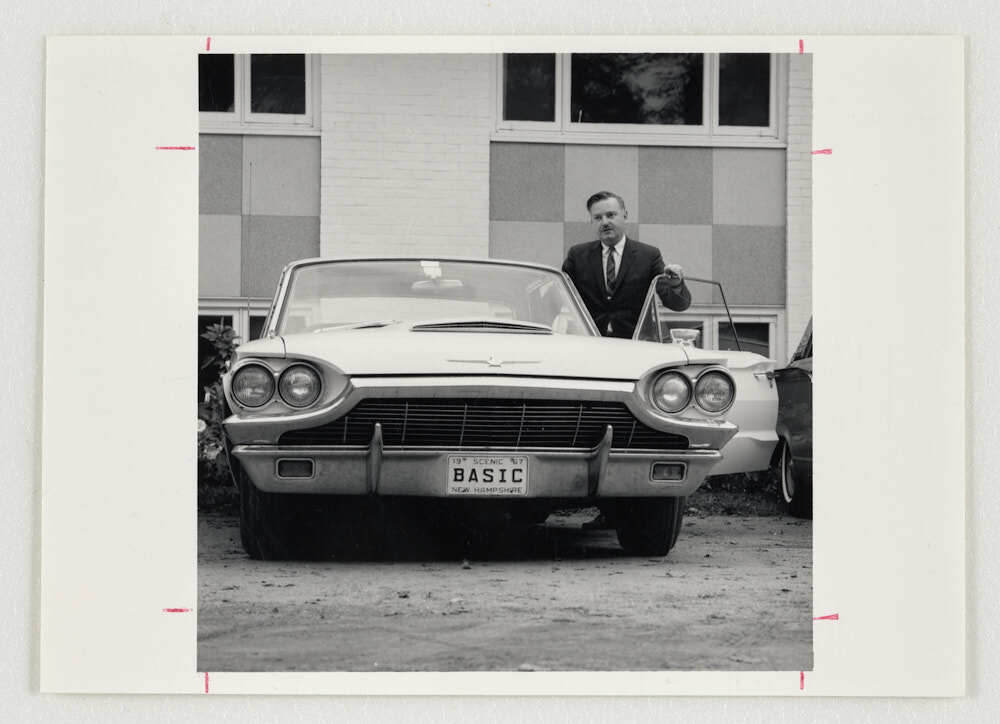
John G. Kemeny in Front of Gerry
Kemeny stands in front of the Gerry building, displaying the BASIC license plate on his car.
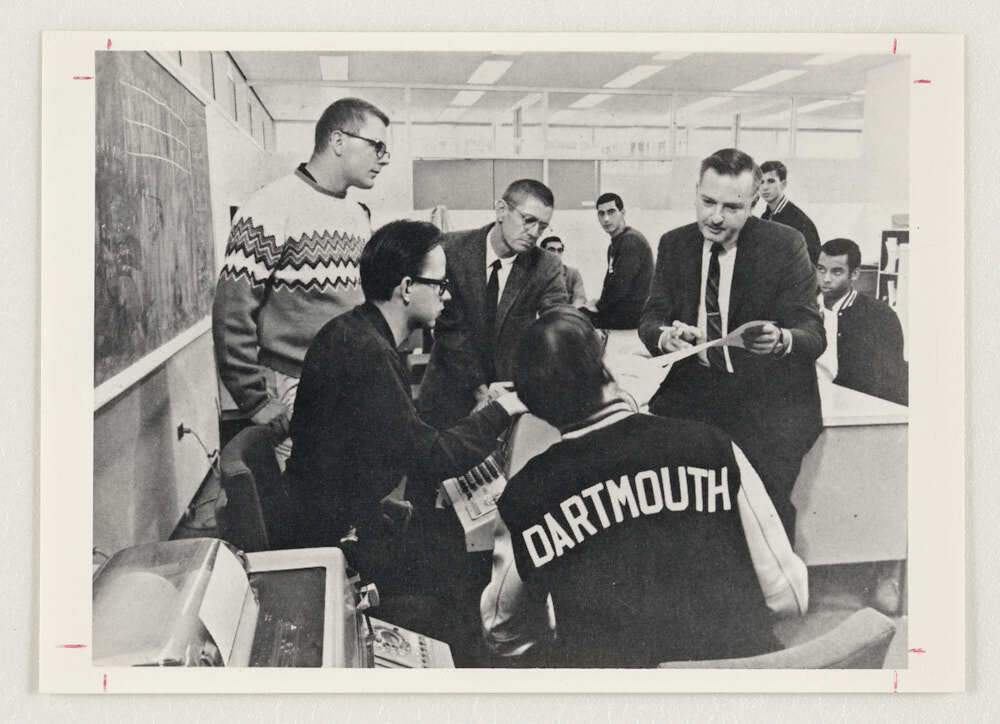
Kiewit Computation Center, Public Terminal Room: John G. Kemeny, Thomas E. Kurtz, Students
Kemeny and Kurtz work with students in the Kiewit Computation Center, circa 1969.

John G. Kemeny to Steve Garland, January 29, 1959
Stephen Garland ’63 was among the first undergraduates who began working with Kemeny and Kurtz on computing, programming Dartmouth’s LGP-30 and laying the groundwork for the time-sharing system to come. Kemeny’s letter shows how carefully these students were selected and, in Garland’s case, actively “recruited.”
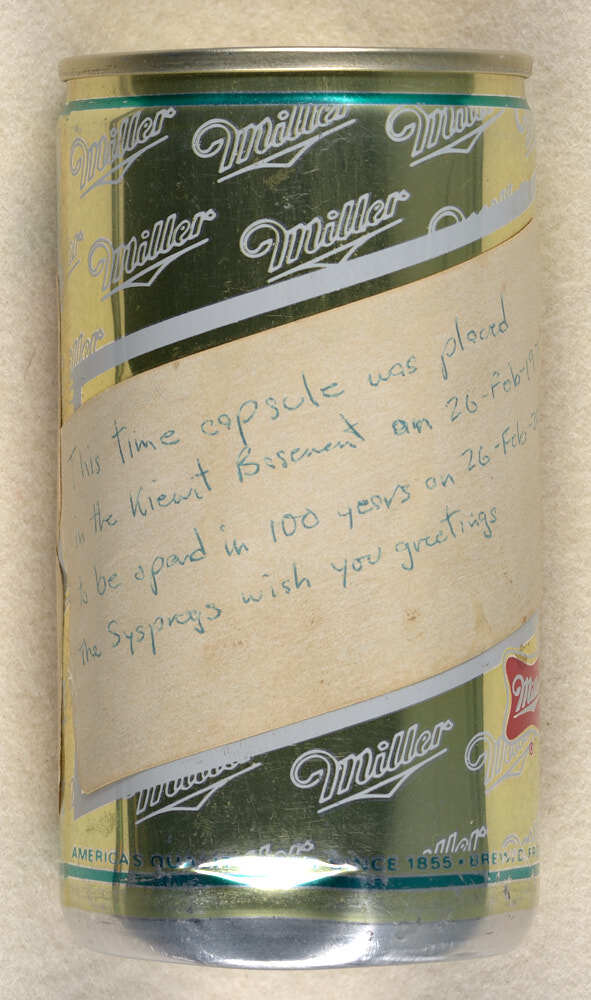
Beer can time capsule
The sysprogs in February 1977 signed this “time capsule” and declared that it should be opened in 100 years. The names belong to many class years, including some who were first-years at the time. Unfortunately, the contents of the time capsule had to be removed in 2005, when we discovered that the beer was leaking and causing mold to grow in the box it was stored in.
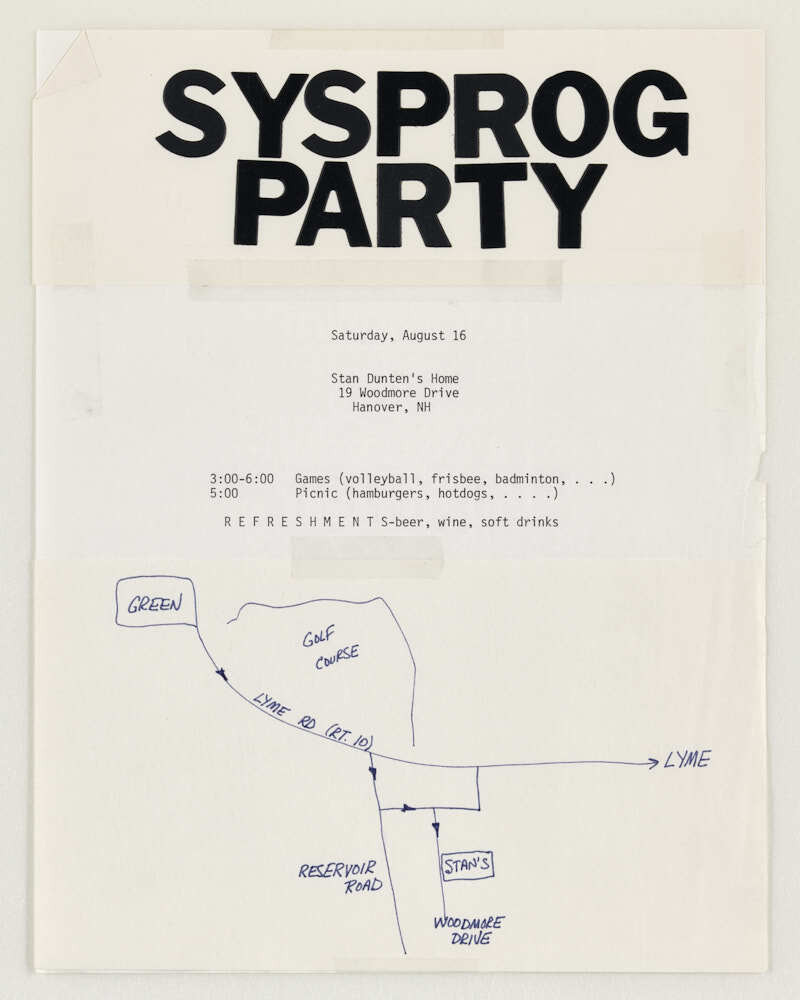
Sysprog Party
Sysprogs gathered for a picnic at the house of Stan Dunten, an MIT '63 who became Dartmouth's senior systems programmer in 1971. To give an idea of the size of the party, a list of items to purchase included 53 hamburgers.
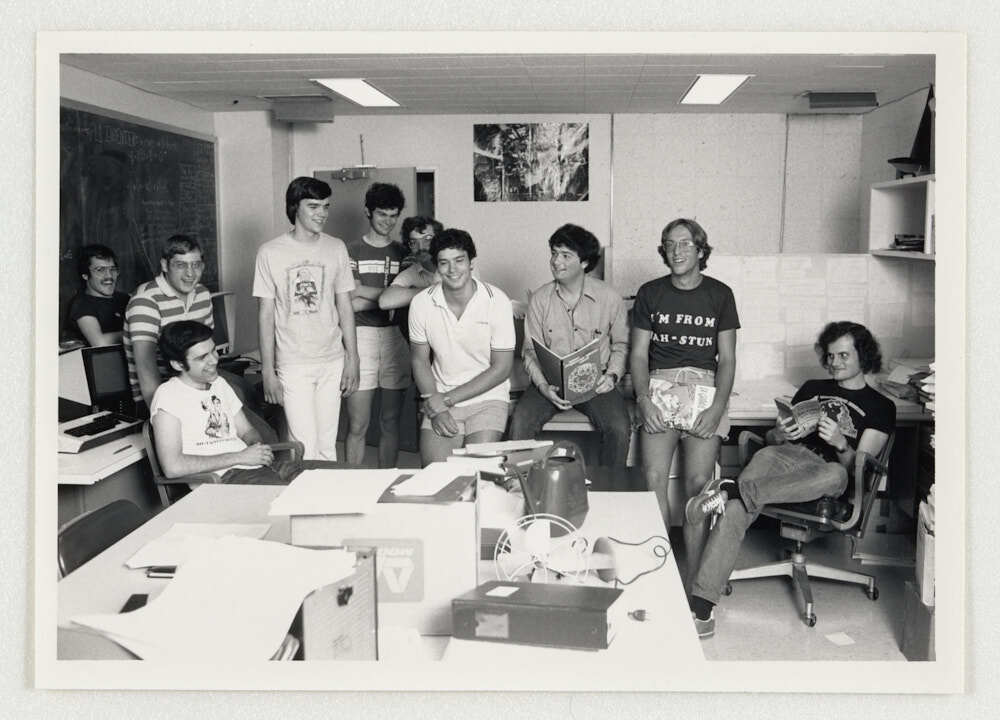
Kiewit Student Bullpen: Systems Programmers
Student sysprogs pose for some casual group photos in the "student bullpen" of the Kiewit Computation Center.
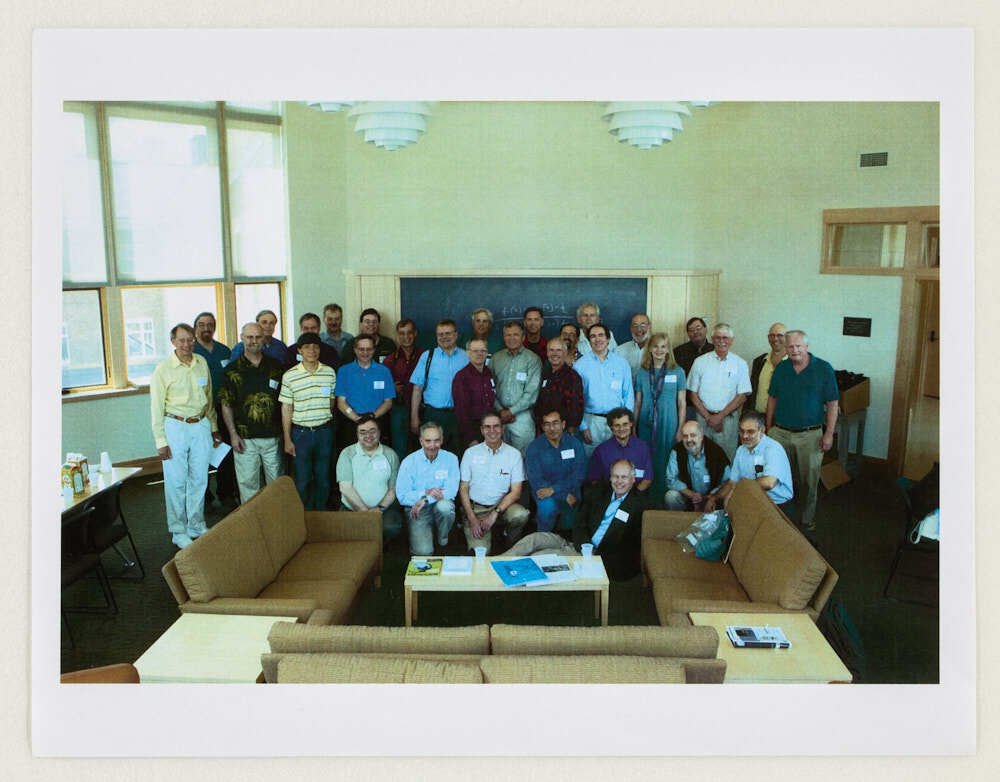
Systems Programmers Reunions
This photo documents a 2007 reunion of many of the original DTSS sysprogs.
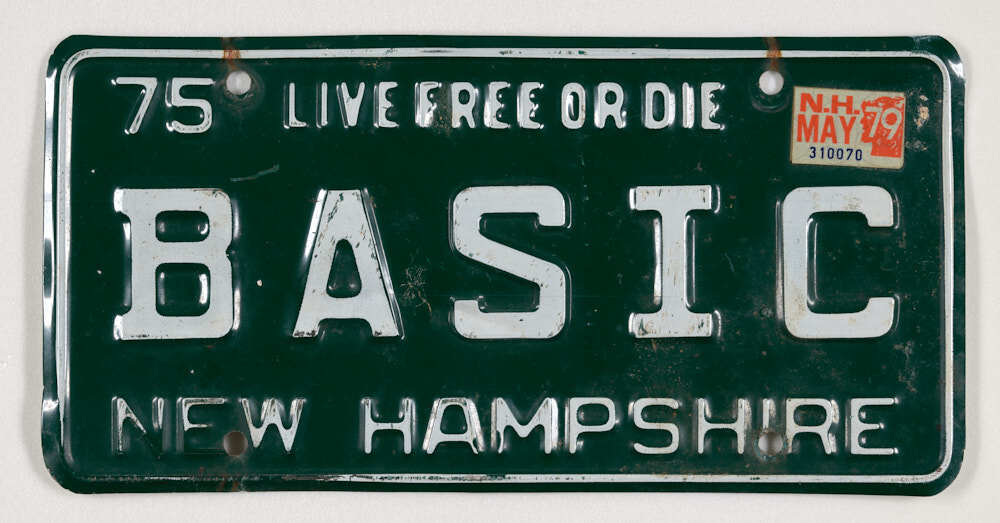
"BASIC" license plate
John Kemeny’s car displayed this tribute to BASIC, the programming language Kemeny created for the DTSS. He intended BASIC to be an easy-to-use language for the flood of inexperienced users who would now have access to a computer.
